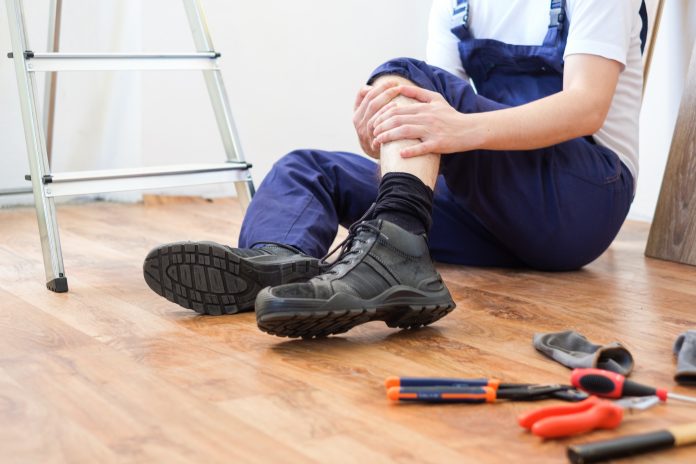HSE 2022 annual statistics show that over half of all working days were lost due to work-related ill health in the last year
The Health and Safety Executive (HSE) has published the 2021/2022 annual statistics on work-related ill health and workplace injuries.
New figures show that around half of the 1.8m cases of work-related illness in Great Britain are identified as either stress, depression and anxiety(an estimated 914,00 cases in 2021/22).
An estimated 17m working days were lost due to work-related stress, depression, or anxiety in 2021/22. This is over half of all working days lost due to work-related ill health.
HSE warns of a growing crisis in work-related stress and poor mental health
The workplace regulator launched a major campaign last year to remind employers of their responsibilities to their employees’ mental health.
HSE’s chief executive, Sarah Albon, said: “Stress and poor mental health is the number one cause of work-related ill health. The effects of stress, depression, and anxiety can have a significant impact on an employee’s life and on their ability to perform their best at work.
“Britain is one of the safest places in the world to work but we need all employers to do more and take seriously their responsibilities to support good mental health at work. That’s why improving mental health in the workplace is a key priority in our 10-year strategy ‘Protecting People and Places’, and why we’re developing new partnerships across industry to help employers support their employees.”
The stats show the impact work-related ill health is having on economic performance:
- 36.8m working days were lost due to work-related ill health and non-fatal workplace injuries in 2021/22
- The annual economic cost of work-related injury and new cases of ill health (excluding long-latency illnesses such as cancer) was £18.8 bn in 2019/20
- The figures also show that 123 workers were killed in work-related accidents in 2021/22, and a further 565,000 workers sustained a non-fatal injury.
COVID-19 continues to impact on the workplace
Of the 1.8m suffering a work-related illness, an estimated 585,000 reported it was caused or made worse by the effects of the coronavirus pandemic. In addition, 123,000 workers suffering with Covid-19 believed they were exposed to the virus at work.
HSE 2022 annual statistics show 59,000 cases of non-fatal work-related injury in the construction industry
Alongside the full report, a separate breakdown for the construction industry published by HSE shows that workplace injuries in the construction industry are significantly higher than in other sectors.
Ben Henderson, head of product solution consulting at Intelex EMEA, commented:
“Today’s results show there is still a considerable amount of work to do in improving workplace safety in the UK. At Intelex, we know that one of the easiest ways for employers to improve workplace safety is by removing barriers and making it easy for employees to do the right thing.
“Technology can play a central role in helping to foster a workplace culture that puts safety at its heart. Giving health and safety professionals’ access to the information they need quickly and efficiently, allowing them to produce accurate and timely reports, makes it easy to communicate actions that need to be taken up and down the business.”
Musculoskeletal disorders continue to burden worker health
The latest statistics show that 7.3m working days were lost last year to musculoskeletal disorders (MSDs) with 477,000 cases being reported in 2022, 139,000 of which were new cases. MSDs are common in most industries, but the agriculture, forestry & fishing, construction and human health/ social work sectors have significantly higher than average rates.
Simon Ash, from personal protective footwear manufacturer HAIX, comments, “MSD injuries are most often associated with pain in the joints and muscles with aching or stiffness in the back and upper limbs most common. Back pain is often linked to tasks that involve lifting and carrying, bending and crouching as well as with spending long periods in one position.
“The correct footwear supports the entire body and helps to reduce the risk of injury, particularly when working in slippery, wet environments. If footwear is comfortable, people are more likely to be concentrating on their task as opposed to worrying about their feet; meaning productivity also significantly improves. A key feature to look for when buying work boots is that they actively work to correct foot posture, which can help reduce lower body and back pain by aligning the spine properly. Doing so will reduce MSDs and provide superior long-term comfort.”
“Ultimately, the latest HSE statistics demonstrate that musculoskeletal injuries are still a major problem in the workplace. When selecting safety footwear take it seriously and consider both the long-term benefits and potential impacts incorrect choices can have so that more workers can stay safe on their feet.”









![[VIDEO] Time to Talk ep. 3 – Interview with Lauren Harrison: Poor mental health in construction Poor mental health in construction can affect office workers and women as well, as the interview with Lauren Harrison shows](https://www.pbctoday.co.uk/news/wp-content/uploads/2025/02/iStock-1496597578-218x150.jpg)




![[VIDEO] Time to Talk ep. 3 – Interview with Mike Humphries: Poor mental health in construction poor mental health in construction can lead to accident or injury](https://www.pbctoday.co.uk/news/wp-content/uploads/2025/02/iStock-1069249372-218x150.jpg)